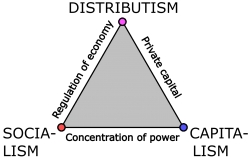I.) Introduction: Three Revolutions, Three Ages.
In the course of human history, few developments can match the importance of the Industrial Revolution in transforming the lives and livelihoods of men across the globe as it reshaped politics, economics and society. Upon closer scrutiny, this Revolution (a phrase that may be said to refer to the technical, economic and social changes centered in Europe and North America over the period from 1750 to 1900 AD), turns out to be a collection of phenomena, at least two of which deserve to be regarded as revolutions in their own right. These are the development and widespread adoption of steam-powered machinery in the late 18th and early 19th centuries, which we may denote as the Mechanical Revolution (MR), and the development and widespread use of electricity (and numerous other inventions, such as the internal combustion engine) from the late 19th century onwards, which we may likewise denote as the Electrical Revolution (ER). Each involved a transformation, not only of the means and methods of production, but also of transportation, with railroads resulting from the MR, and automobiles, from the ER. It is for this reason that economic historians sometimes speak of a 'second' Industrial Revolution in the last quarter of the 19th century.
Such was the impact of these revolutions on both economy and society, that it is feasible to speak of three ages in conjunction with them, (following Gorham Munson in Aladdin's Lamp). Prior to the MR, there was a Handicraft Age, in which production took the form of men using tools. Machinery, insofar as it existed in this era, was linked to a few sectors, notably weaving and printing, and was almost entirely hand-powered, (wind and water mills being the obvious exception).
The MR, with the widespread adoption of the Steam Engine, gave rise to the Machine Age, in which production took the form of machinery using men. Yet whilst use of inanimate sources of power grew in importance significantly, men were still needed to shovel coal into the boilers.
The ER, above all, Nikola Tesla's development of alternating current that enabled power to be transmitted over vast distances, brought about the Power Age, in which production increasingly involved machinery dispensing with men. Thanks to access to a steady supply of electrical power, machinery could be operated with less and less human involvement; greater output could now be attained with lower, rather than higher, employment. As Gorham Munson noted:
'Compressed into an ideogram, the Machine Age is two rising curves, loosely clamped together, indicating respectively the growth of production and the numerical growth of the individual wage-earners. The ideogram of the Power Age would be two curves breaking away from the clamp, the curve of production soaring, the curve of employment levelling off and descending. The picture that should spring to the mind's eye when the term, Power Age, is mentioned is the spreading apart of two heretofore bracketed curves. Visualize the conveyor belt on the one hand, and queue of jobless on the other, and your impression of the Power Age will be photographically correct.'
(G. Munson, Aladdin's Lamp, page 4).
The minds of men could hardly be unaffected by such remarkable changes, and in each age, they generated ideologies that reflected the realities and aspirations of the time. Liberalism - both political and economic - was the product of the Handicraft Age, whose merchants, money-lenders and artisans chafed against the might, taxes and restrictions of the monarchy, nobility and clergy - the remnants of the feudal past. Socialism arose in the Machine Age, rallying the relatively recent and rapidly rising ranks of the industrial working class against the bourgeoisie. Social Credit developed in the course of the Power Age, championing the common man in his struggle with the vested interests (most notably, the mighty power of finance), that deny him the abundance that is his birthright.
Nonetheless, any understanding of these ideologies would be insufficient without consideration of another major event, whose effects can still be felt even in our own time: the French Revolution. The violent overthrow of time-honoured institutions, the establishment of new forms of government, new belief systems and new social relations driven by the conviction that it was not only possible, but necessary to create the world anew - and above all, the uncompromising militant idealism (perhaps best exemplified by Robespierre) - influenced, and in many cases, captivated the minds of young men in subsequent generations. Perhaps nothing is more symoblic of this shift than how the revolutionary slogan 'Liberté, Égalité, Fraternité' completely eclipsed the Lockean motto of 'Life, Liberty and Property'.
While Liberalism had its own celebrated upheavals, (notably the English Civil War, and the 'Glorious Revolution') its proponents generally disdained the turmoil, terror and trauma of the revolution, preferring gentle, evolutionary reformist approaches to political change instead. Many Socialists, in contrast, drew inspiration from the great event, increasingly regarding revolution as the means of ramming through necessary and desirable policies by overthrowing the existing obstacles to political, economic and social change. The French Revolution thus instilled a certain zeal in radicals as well as a belief that lasting and meaningful change could best, (or even, only) be achieved through mass mobilization and direct action, rather than via electoral success or by winning the hearts and minds of the existing authorities. Subsequent political upheavals, notably the events of 1848, as well as the revolutions of the twentieth century, were one of the outcomes of such zeal.
Emerging in the aftermath of the First World War, in a nation that had remained aloof of the revolutionary fervour of 1789, 1848 and 1917, Social Credit was very much the child of the Electrical Revolution, in contrast to Socialism which was the product of the French and Mechanical Revolutions. With this in mind, we can better understand the connections and contrasts between the two.




